01 June 2024
Cemeteries & Memorials of the Battle of the Somme
The Battle of the Somme still holds massive military and cultural significance for the Commonwealth. Discover how the dead of the battle are commemorated by Commonwealth War Graves.
Commemorating The Battle of the Somme
What was the Battle of the Somme?

Image: A long line of British reserve troops standing silhouetted against the dawn near Thiepval, 15th September 1916 (IWM (Q 1209))
The Battle of the Somme was a major First World War campaign fought between July – November 1916.
The battle was one of the defining events of the First World War that saw French and Commonwealth troops, predominantly British, stage a titanic attack German lines across the Somme River.
For many, the Somme Offensive embodies the horrors of the First World War, particularly the slaughter of the battle’s first day, the grinding attrition warfare, and the sacrifice of the “Pals Battalions”.
An estimated 3.5 million men fought in the battle. A million became casualties.
Today, the Commonwealth War Graves maintains cemeteries and war memorials commemorating the fallen of this most gruelling of campaigns.
The blackest day in British military history

Image: British soldiers go over the top in a staged re-enactment filmed for the 1916 film The Battle of the Somme (IWM (Q 70169))
The Battle of the Somme began on the morning of 1 July 1916. It is widely regarded as the worst day in the history of the British Army.
On that day alone, the British Army took 57,000 casualties including over 18,500 killed. This remains the largest loss of life in a single day in the history of the British Army.
Amongst the British Forces arrayed along the Somme front were the “Pals Battalions”. These were volunteer recruits from the same communities, workplaces, organisations, and sometimes even the same streets.
The Pals Battalions enlisted, trained, fought, and tragically, died together in large numbers, many on the first day of the Somme. Entire communities were left grieving the loss of hundreds of thousands of young men.
Was the Battle of the Somme a success?

Image: A wounded British soldier is carried by stretcher-bearers at the Battle of Albert (IWM (Q 771))
Following the disaster of the first day, the Somme continued for a further five months until winding up in November 1916.
Some initial successes were made but neither side achieved a decisive breakthrough. The high cost of life for minimal gains lends a heavy air of tragedy to the Battle of the Somme.
While it was not a straightforward military success, important lessons were learnt from the Somme experience.
This was Britain’s first major battle for its volunteer army. Over a gruelling five months, the Somme forged these citizen soldiers into battle-hardened troops.
For British high command, the Somme also taught the generals how to command troops on this scale, something which had rarely been seen before in the history of British warfare.
New developments in tactics, artillery, weapons and technology were introduced on the Somme too, including the world’s first appearance of tanks on the battlefield. The lessons learned on the Somme were put into practice in the following weeks and months, aiding the final Allied advance to victory in 1918.
Casualties of the Battle of the Somme
There is no overlooking the enormous loss of life from the Battle of the Somme.
Over 18,500 soldiers were killed on the battle’s first day alone. By the end of the offensive, more than 150,000 Commonwealth servicemen had lost their lives.
Including wounded men, the British Army suffered more than 440,000 casualties during the Somme Offensive.
Commemorating the fallen of the Battle of the Somme
The Commonwealth War Graves Commission perpetually commemorates the war dead of the Battle of the Somme.
From scattered individual burials to large-scale constructed cemeteries and monumental war memorials, Commonwealth War Graves maintains over 350 sites commemorating Somme casualties.
Where are Somme Offensive casualties buried?

Image: Serre Road Cemetery No.2, one of the largest cemeteries commemorating the war dead of the Somme Offensive.
Commonwealth War Graves maintain some 150,000 burials of the Battle of the Somme. In many cases, the cemeteries and memorials sit on the site of former Somme battlefields.
At first, soldiers were buried in impromptu graves or makeshift burial grounds on the frontlines. In time, burials from these scattered sites were brought into larger purpose built CWGC cemeteries, although some isolated war graves dot the Somme department.
Other casualties were evacuated from the frontlines and died in field hospitals or medical centres. Some were sent back to the UK for treatment. Those who succumbed to their injuries in Britain are usually commemorated there.
Are there war memorials commemorating the Battle of the Somme?
The nature of First World War battles meant soldiers simply went missing or were too difficult to identify in recovery.
Casualties with no known war grave are commemorated on Commonwealth War Graves Commission war memorials or those we maintain on behalf of member governments.
Thiepval Memorial to the Missing

Image: Thiepval Memorial: the largest CWGC war memorial in the world
Standing sentinel over the former Somme battlefields is the majestic Thiepval Memorial to the Missing.
Designed by Sir Edwin Lutyens, Thiepval is possibly the most iconic CWGC memorial in the world. It is certainly the largest, commemorating by name over 72,000 British and South African officers and enlisted men who died on the Somme before March 20, 1918, but have no known war grave.
90% of the servicemen commemorated by Thiepval died between July and November 1916, i.e., during the Battle of the Somme, testament to the immense slaughter of the five-month campaign.
Thiepval commemorates these men, but it also stands as a memorial to the Anglo-French Alliance established by the Great War. French and British flags fly proudly from the memorial's summit.
It's important to remember that the Battle of the Somme was a joint operation. The French Army took over 200,000 casualties on the Somme, including 50,000 dead, highlighting the enormous human cost of the war for all its belligerents.
Reflecting the joint nature of the battle and the wider war is the Thiepval Anglo-French Cemetery: a small joint cemetery in the shadow of the Thiepval Memorial where French and Commonwealth soldiers lay side by side in perpetuity.
The Thiepval Memorial has stood for nine decades. In that time, it has undergone ongoing maintenance from our dedicated team of war memorial care professionals.
In 2022, the memorial was reopened following a spectacular, sustainably led restoration. Discover more about the project here.
War Cemeteries of the Battle of the Somme
The former battlefields of the Somme are dotted with Commonwealth War Graves Cemeteries.
If one were to stand at the entrance of Caterpilla Valley Cemetery, you'd be able to easily spot numerous CWGC sites, reflecting your position in one of the war's deadliest killing fields.
Amongst the rolling fields, woods, farmland, towns and villages from the Somme, CWGC headstones are familiar sites.
Some of our largest Battle of the Somme cemeteries include:
- Serre Road Cemetery No.2 – 7,137 war graves
- Caterpillar Valley Cemetery, Longueval – 5,571 war graves
- Delville Wood Cemetery, Longueval – 5,523 war graves
- London Cemetery and Extension, Longueval – 3,874 war graves
- A.I.F Burial Ground, Flers – 3,874 war graves

Serre Road Cemetery No.2
The Serre-Pusieux Road was attacked twice during the Battle of the Somme with the 4th and 31st Divisions attacking on 1 July and the 3rd and 31st Divisions trying again on 16 November. Both attacks failed.
There are three CWGC cemeteries along Serre Road with No.2 being the largest. Over 7,000 First World War burials are found here. More than 5,000 are unidentified.
Serre Road Cemetery No.2 reflects the global nature of the First World War. Most of the burials are British, but Canadian, South African, Australian, and New Zealand servicemen, and a sole German casualty, are commemorated here.

Caterpillar Valley Cemetery, Longueval
Over 5,500 Commonwealth servicemen are commemorated at Caterpillar Valley Cemetery. The vast majority of those buried here died in the autumn of 1916. The remainder date from August and September 1918.
Caterpillar Valley was captured by a daring night assault by the 3rd, 7th and 9th Divisions on 14 July 1916 during the attack on Bazentin Ridge. It was held until the German Spring Offensive of March 1918 before being retaken in August 1918 by the 28th (Welsh Division).
Within the cemetery sits the Caterpillar Valley (New Zealand) Memorial. The memorial commemorates by name over 1,200 New Zealand officers and enlisted men who died on the Somme battlefields whose graves are unknown.
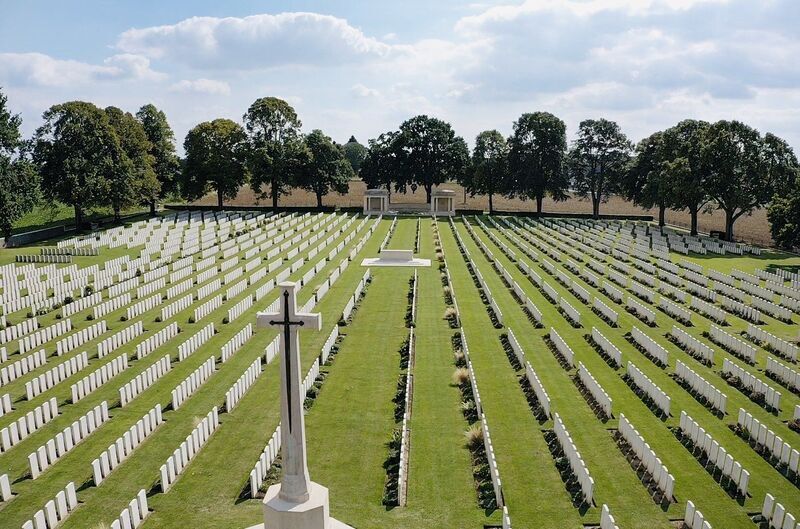
Delville Wood Cemetery, Longueval
Delville Wood Cemetery was started after the 1918 Armistice, taking in graves from small cemeteries and burial grounds and battlefield casualties. It holds over 5,500 war graves.
The South African Brigade captured Delville Wood on July 14, 1916. No artillery support was available to help with the defence, and after six days of hard fighting, the South Africans were pushed back. The three battalions that had entered the woods were reduced to a handful of men.
The wood was taken in August 1916, before changing hands again in April 1918. It was finally captured by the 38th (Welsh) Division in August 1918.
Opposite Delville Wood Cemetery is the South African National Memorial. Originally dedicated to all South African servicemen of the Great War, it has been expanded to commemorate the Second World War and Korean War.
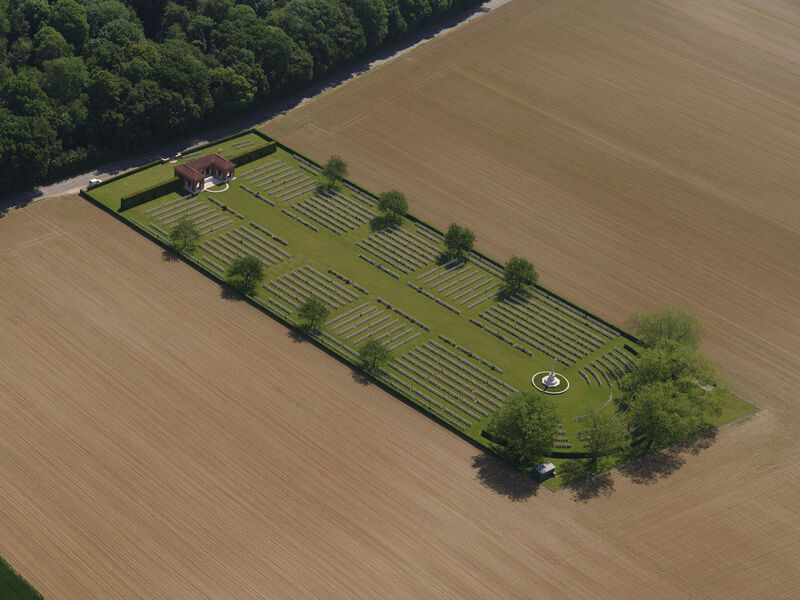
London Cemetery and Extension, Longueval
High Wood was subject to fierce fighting during the Somme Offensive until its clearing by the 47th (London) Division in September 1916. Like many of the Somme gains, it was lost in the German Spring Offensive in early 1918 until its recapture in August of that year.
London Cemetery began with the burial of 47 men of the London Division in a large shell hole in September 1916. By Armistice, it held 101 graves.
As of today, London Cemetery contains more than 3,700 First World War burials. An extension was added after the Second World War, adding 165 WW2 burials.
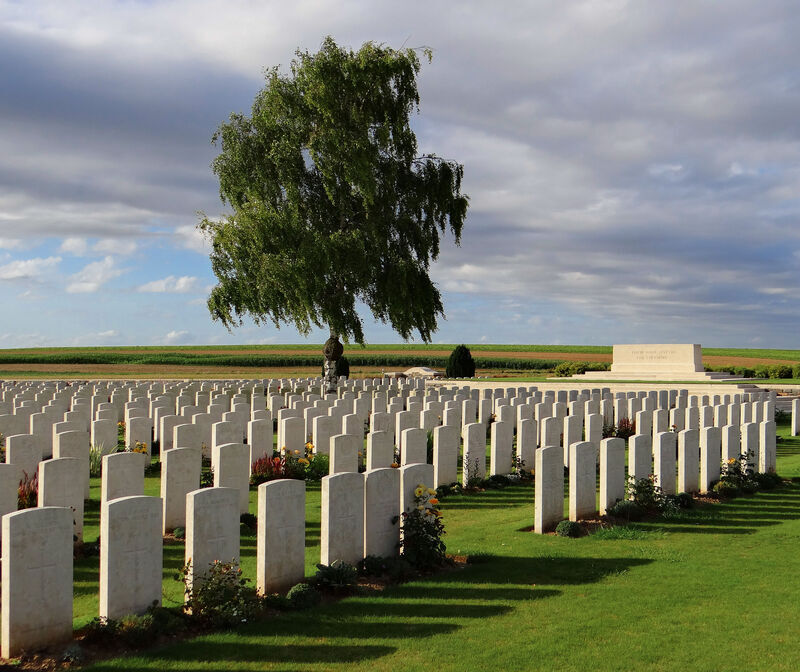
A.I.F Burial Ground, Flers
Originally started by Australian medical personnel in November 1916, A.I.F Burial Ground, Flers today holds almost 4,000 First World War war graves. The original burials are still here in Plot I, Rows A and B.
Flers was taken during the battle of Flers-Courcelette when the New Zealand and 41st Division entered the village on 15 September 1916.
Flers-Corcelette is remembered as the first time tanks were deployed in combat.
War Memorials of the Battle of the Somme
Commonwealth War Graves maintains eight memorials to the missing of the Battle of the Somme. Several memorials also commemorate casualties from other offensives and campaigns fought in the Somme region.
Together, the CWGC’s Somme Memorials commemorate more than 115,000 officers and servicemen from across the Commonwealth and beyond. Of these, Theipval is the largest.
Our war memorials are dedicated to those whose graves are unknown.
Some of the key Somme memorials include:
- Pozieres Memorial – 14,701 casualties
- Vimy Memorial - 11,151 casualties
- Villers-Bretonneux Memorial - 10,703 casualties
- Neuve-Chapelle Memorial - 4,653
- Beaumont-Hamel (Newfoundland) Memorial - 808 casualties

Pozieres Memorial
Although the Pozieres Memorial is the second largest memorial in the Somme region, it predominantly commemorates servicemen killed in the period March-August 7, 1918, during the battles of the Spring Offensive and subsequent actions.
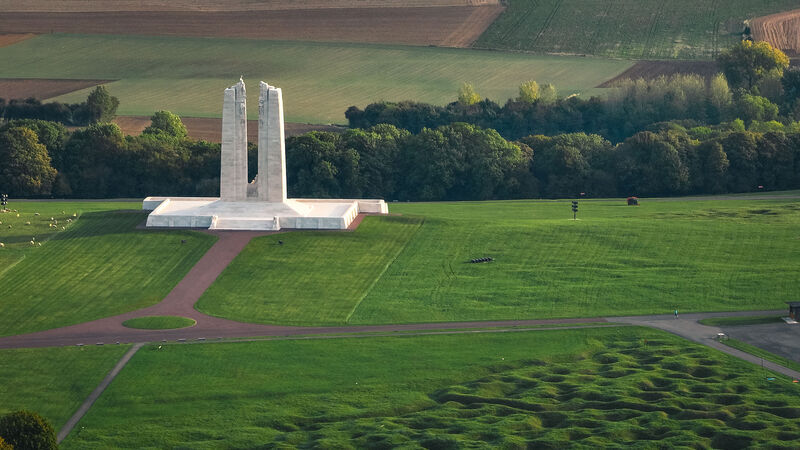
Vimy Memorial
The Vimy Memorial is not within the Somme Department but lies atop Vimy Ridge in the Pas-des-Calais.
Vimy is the Canadian National Memorial dedicated to missing and fallen Canadian soldiers in France and around the world.
The Memorial commemorates by name over 11,000 Canadians of the Great War with no known war grave, including some 4,500 dating from the Somme Offensive.
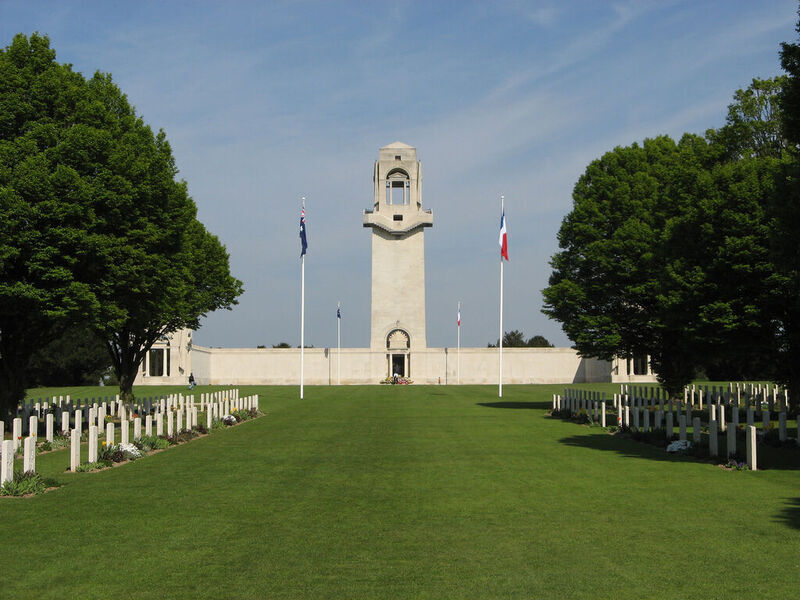
Villers-Bretonneux Memorial
Villers-Bretonneux is Australia’s national memorial to the missing. It sits near to the village of Villers-Bretonneux where the heroics of the Australians stopped dead the German Spring Offensive.
Close to 11,000 missing Australian servicemen of the Great War are commemorated at Villers-Bretonneux. Roughly 5,000 of these commemorations date from between July and November 1916.
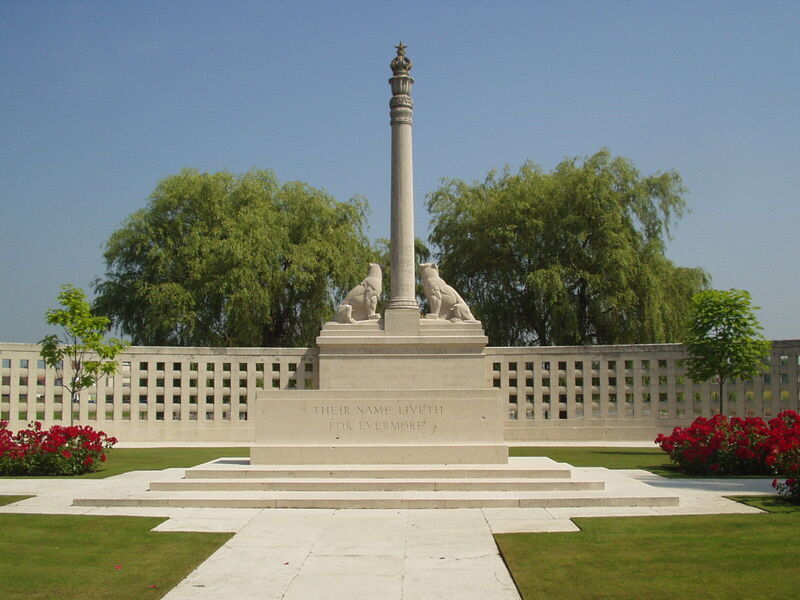
Neuve-Chappelle Memorial
Neuve-Chappelle is India’s national memorial dedicated to Indian Army soldiers who served on the Western Front whose graves are not known.
The memorial commemorates over 4,600 officers and enlisted men, with just 57 coming from the time of the Somme.
The site was chosen as it was at Neuve-Chappelle that the Indian Corps fought its first action as a single unit in March 1915.

Beaumont-Hamel (Newfoundland) Memorial
At the time of the First World War, Newfoundland as a separate British Dominion, separate from Canada. It raised its own regiment and served on the Western Front.
On the morning of the Somme’s first day, the Newfoundlanders went forward alongside the Essex Regiment. Faced with withering fire, they continued their advance but were utterly devastated.
Of 800 men, only 110 survived the first day of the Somme and just 68 reported for duty at the next morning’s rollcall. No unit suffered heavier losses that day.
The Beaumont-Hamel Memorial stands amidst the Newfoundlander’s preserved trenches, commemorating more than 800 servicemen, mercantile marine, and naval personnel lost during the First World War.
Visit the Commonwealth War Graves Commission sites in the Somme
Uniquely, the war dead of the Somme lie eternally on or close to the battlefields where they fell, in beautifully designed and expertly maintained CWGC cemeteries.
Location and visitor information is available on our website. Use our Find Cemeteries & Memorials tool to find all of our sites in the Somme and beyond.
You can also use our Find War Dead tool to discover the final resting places of Commonwealth soldiers who died in the Titanic Battle of the Somme.

